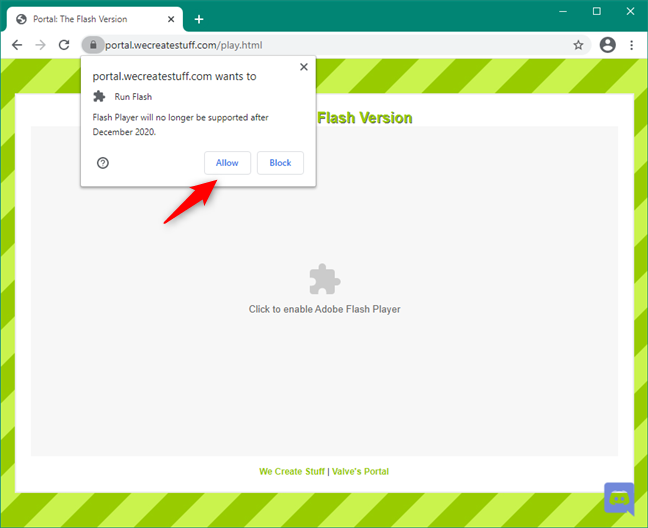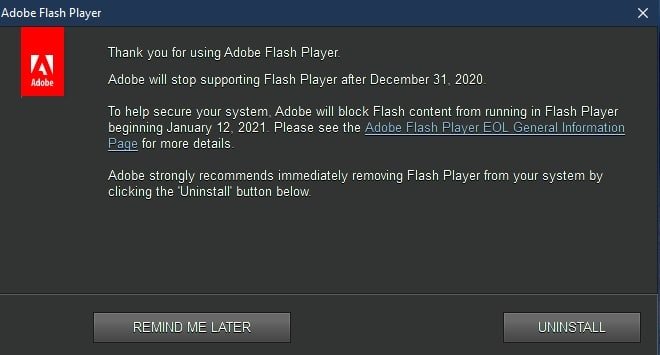

- Shockwave flash player for chrome how to#
- Shockwave flash player for chrome install#
- Shockwave flash player for chrome update#
- Shockwave flash player for chrome software#
This includes malware and network-related software that interferes with Google Chrome. Some software on your computer can conflict with Google Chrome and cause it to crash.
Shockwave flash player for chrome update#
Make sure to check for updates at Adobe’s Flash download page and/or turn on the update check in your local installation of Adobe Flash. Remember, you’ll no longer be getting automatic updates with each Chrome upgrade. Restart Chrome and resume normal browsing-visit Adobe’s test page to ensure everything looks good: Go ahead and close the tab and then close Google Chrome. Once you do so the entry for the internal installation should look like so: You need to click on the Disable link for Chrome’s internal installation of Flash (make sure you disable the one located in Chrome’s AppData folder and not the separate stand-alone Flash installation).

You should see something like the screenshot above: two entries for Flash, one for the internal Chrome installation (highlighted in red here) and one for the host OS’s installation (seen below the highlighted entry). Click on that toggle to expand the entries for all the plug-ins. In the upper right hand corner of the browser window, there is a small toggle labeled Details. If the entry looks like Flash (2 Files) there is a very good chance the source of your Flash-related crashes is a conflict between the two. Look down the list of plug-ins for the Flash entry. After you press enter, you’ll be greeted with a list of all the plug-ins installed in Chrome (this is different from user-installed Extensions). In the address bar, type about:plugins in the address bar. How can you tell if a Flash conflict is the source of your trouble? Run Chrome.
Shockwave flash player for chrome install#
Second, while not every instance of Flash flaking out in Chrome can be attributed to a Flash install conflict, we’ve found it to be the most common reason users are experiencing Flash-related problems. You don’t realize how many web sites use Flash until every single tab locks up with a crash warning-”The following plug-in has crashed: Shockwave Flash” How Do I Know A Conflicting Flash Installation Is Causing The Crashes?įirst of all, despite the warning about Shockwave, the actual warning has nothing to do with Adobe Shockwave, which is a separate program/multimedia system from Adobe Flash. The result is serious browser lag, temporary lockup, and then a browser-wide crash of all active Flash instances. Unfortunately, things can fall apart pretty easily if Chrome gets confused and attempts to utilize both the OS installation of Flash and the internal Chrome installation of Flash. When everything goes smoothly, this isn’t a problem-the internal Flash installation is updated with every new Chrome release. While other browsers call upon the Flash installation of the host system, Chrome includes an internal Flash installation. The reason we’re talking about Chrome and not, say, Firefox, is because of the way Chrome handles Flash content. The following tutorial will help you get Chrome back to its speedy self. More so than other browsers, Google Chrome is particularly susceptible to a specific but not uncommon situation in which it simply will not coexist peacefully with Adobe Flash-frequent slow downs and annoying crashes are common as a result.
Shockwave flash player for chrome how to#

Click Start > run, type appwiz.cpl and click Run.fp_27.0.0.159 is not the latest version, the latest Flash version is 27.0.0.170.Īll versions previous to 27.0.0.170 are impacted with the vulnerability CVE-2017-11292. Pasting the workaround steps here for easy reference (but these may go stale as the KB is updated)Ĭaution: This has not been verified by Adobe. Shockwave Flash crashes with vSphere Web Client 6.5 (2151945) | VMware KB A KB article has been published/updated with some workaround steps (similar to William Lam's post).


 0 kommentar(er)
0 kommentar(er)
